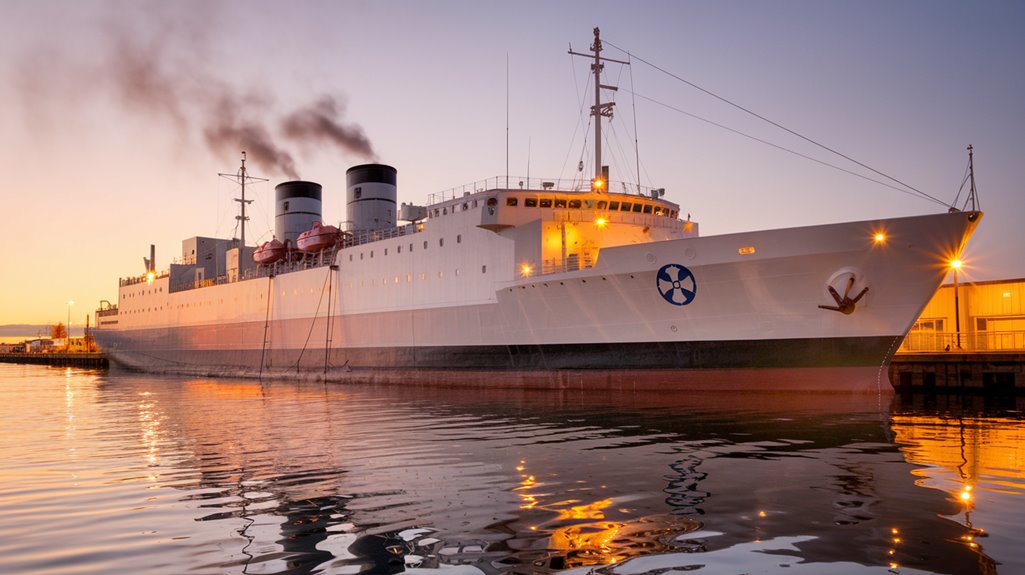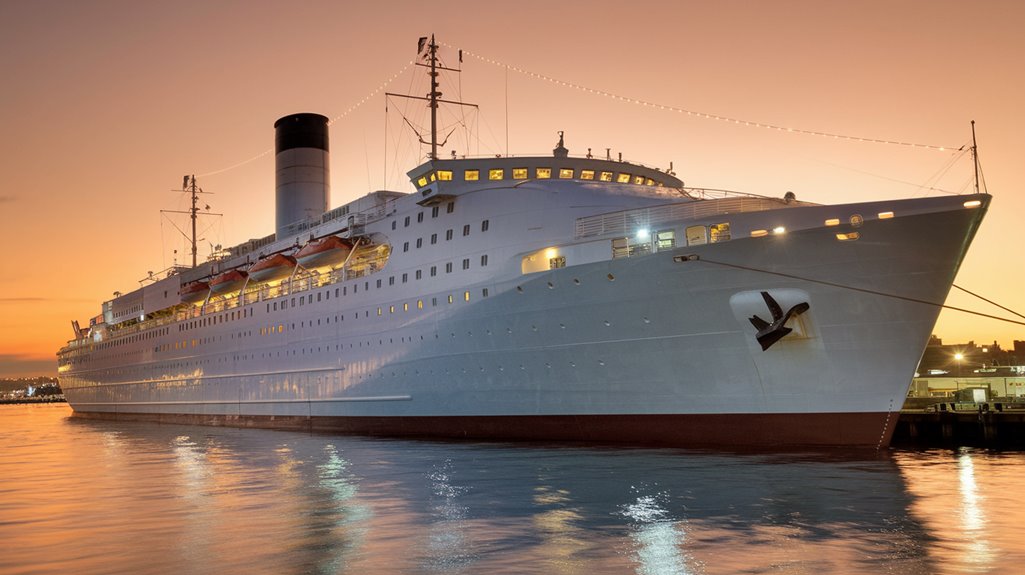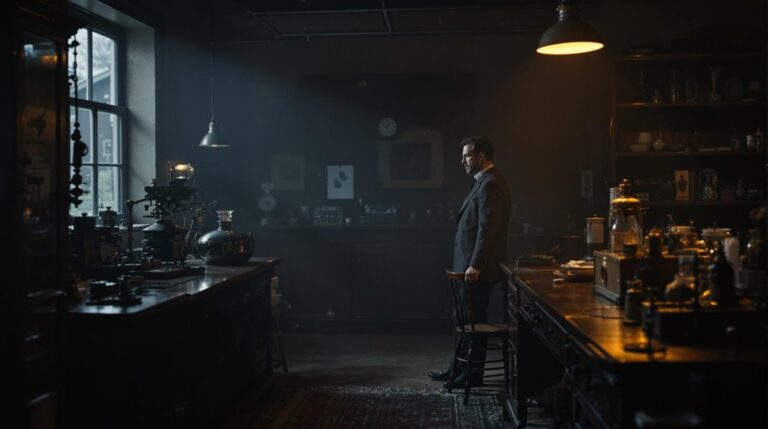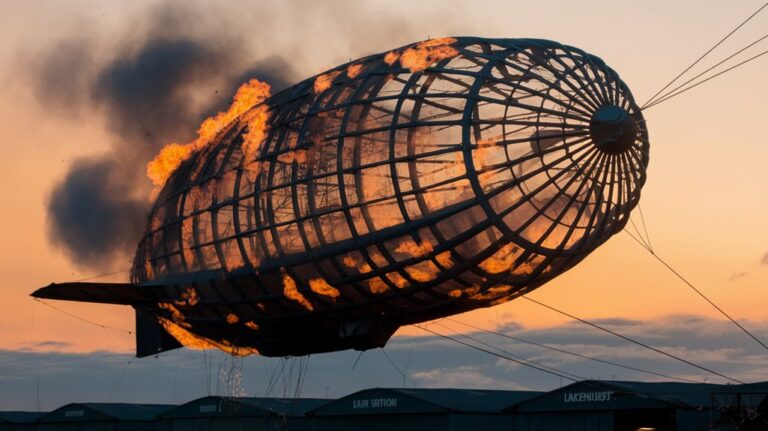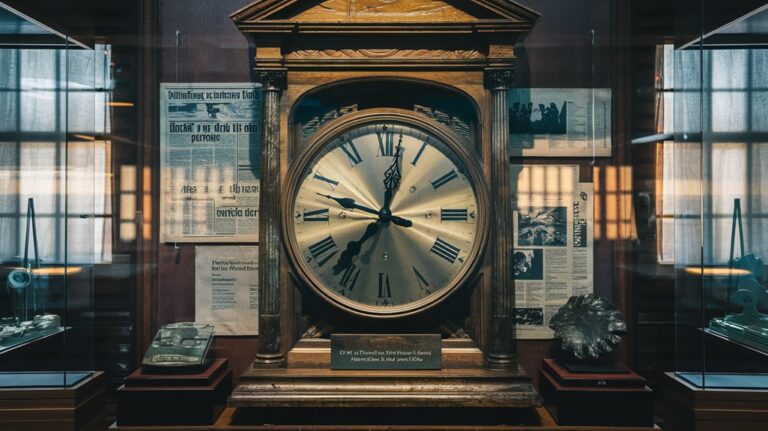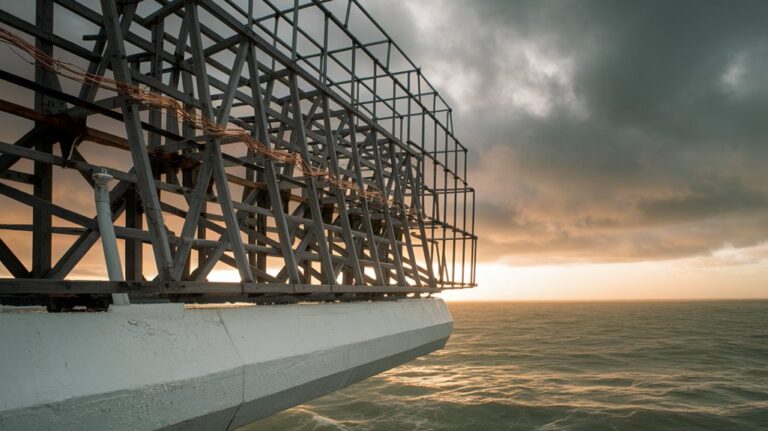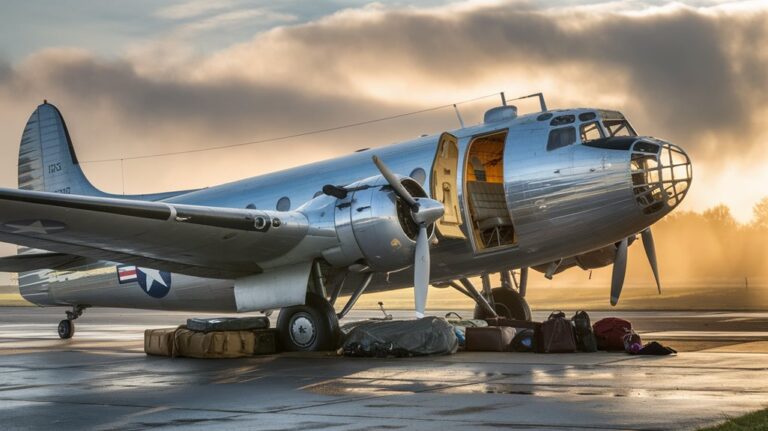When Nuclear-Powered Ships Were the ‘Wave’ of the Future
You might not know that in 1955, President Eisenhower's "Atoms for Peace" program envisioned thousands of nuclear-powered merchant ships crossing the world's oceans. It wasn't just a wild dream—the technology worked, and several vessels proved it. But today, you'll find only a handful of nuclear ships still operating, mostly military submarines and Russian icebreakers. What turned this promising maritime revolution into a footnote of history? The answer lies in a complex tale of innovation, public fear, and economic reality.
The Birth of Nuclear Maritime Power: From Vision to Reality
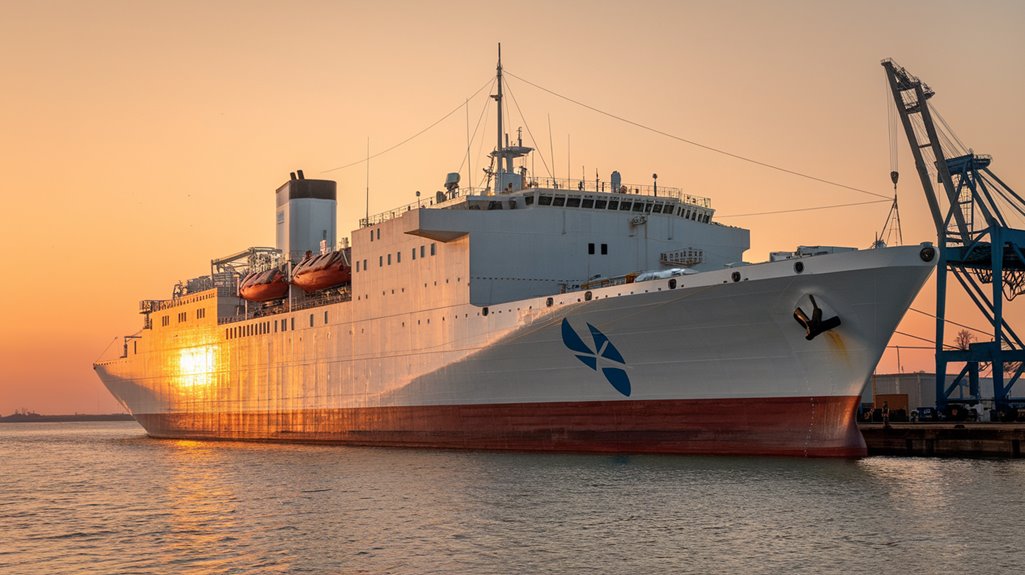
While many technological breakthroughs shaped the 20th century, few were as transformative as nuclear maritime power. In 1939, the initial proposal for nuclear propulsion marked the beginning of a revolutionary maritime innovation that would forever change naval capabilities.
You'll find the true turning point came in 1951 when Congress authorized America's first nuclear-powered submarine. This decision led to the historic commissioning of USS Nautilus in 1954, proving that nuclear propulsion wasn't just a dream but a powerful reality. The vessel quickly captured public imagination worldwide as the first of its kind.
Under the leadership of Captain Hyman Rickover, the U.S. Navy's nuclear propulsion program rapidly advanced from concept to operational success.
The basic principle was ingenious yet straightforward: nuclear fission generated steam to power turbines, enabling vessels to operate for extended periods without refueling.
This breakthrough fundamentally transformed submarine warfare, allowing vessels to remain submerged for weeks instead of hours, while operating with unprecedented speed and stealth.
The USS Nautilus: A Revolutionary Leap in Naval History
When the USS Nautilus first sliced through the waters in 1954, it marked a watershed moment in naval history. Built by General Dynamics Electric Boat Division, this nuclear innovation revolutionized submarine warfare with its S2W reactor, enabling unprecedented operational capabilities. With a crew of 104 personnel onboard, the submarine represented the pinnacle of naval staffing and operational efficiency for its time. The vessel's design drew inspiration from the impressive German Type XXI U-boats.
You can appreciate the Nautilus's submarine legacy through its remarkable achievements. At 320 feet long, it completed a groundbreaking 1,000-mile submerged run and made history as the first vessel to transit beneath the North Pole.
During its 25-year service, you'd find the Nautilus covering over 513,550 miles and completing 2,507 dives. Its impact extended far beyond these numbers – the submarine's success paved the way for future nuclear-powered vessels and secured America's naval superiority throughout the Cold War.
The Nuclear Merchant Dream: NS Savannah's Legacy
The success of the USS Nautilus sparked a bold vision for nuclear power beyond military applications. In 1959, the NS Savannah emerged as a groundbreaking experiment in maritime history, representing America's commitment to peaceful nuclear innovation. The ship was built under President Eisenhower's initiative to demonstrate peaceful atomic energy applications. The ship's unique design featured a teardrop-shaped superstructure that set it apart from conventional vessels.
You'll find that this $46.9 million vessel wasn't just a cargo ship; it was a floating ambassador of atomic progress.
Here's what made the Savannah remarkable:
- Could travel 336,000 miles on a single fuel load
- Carried both cargo (9,400 tons) and passengers (60)
- Achieved full reactor power of 22,300 shaft horsepower
- Maintained a perfect safety record throughout operations
While technologically successful, the Savannah proved economically impractical.
Today, she rests in Baltimore as a symbol of an era when nuclear-powered merchant ships seemed like tomorrow's solution to maritime transportation.
Why Nuclear Ships Never Caught the Trade Winds
Despite early optimism surrounding nuclear-powered vessels, several formidable barriers prevented their widespread commercial adoption.
You'll find that economic feasibility was a primary obstacle, as both construction and maintenance costs proved prohibitively expensive. The high price of nuclear fuel, specialized infrastructure, and insurance made these ships commercially unviable.
Safety regulations and security concerns further complicated matters. Commercial vessels weren't built to military specifications, making them more vulnerable to accidents and potential radiation leaks. While nuclear power offered uranium's superior energy density compared to traditional fuels, the risks outweighed this benefit.
You'd also need to take into account the challenges of handling nuclear waste at sea and protecting ships from terrorism and piracy.
Public perception didn't help either. The stigma surrounding nuclear power, combined with regulatory uncertainty, made it difficult to gain widespread acceptance for these vessels in commercial shipping.
The Future Redux: Nuclear Propulsion in Modern Shipping
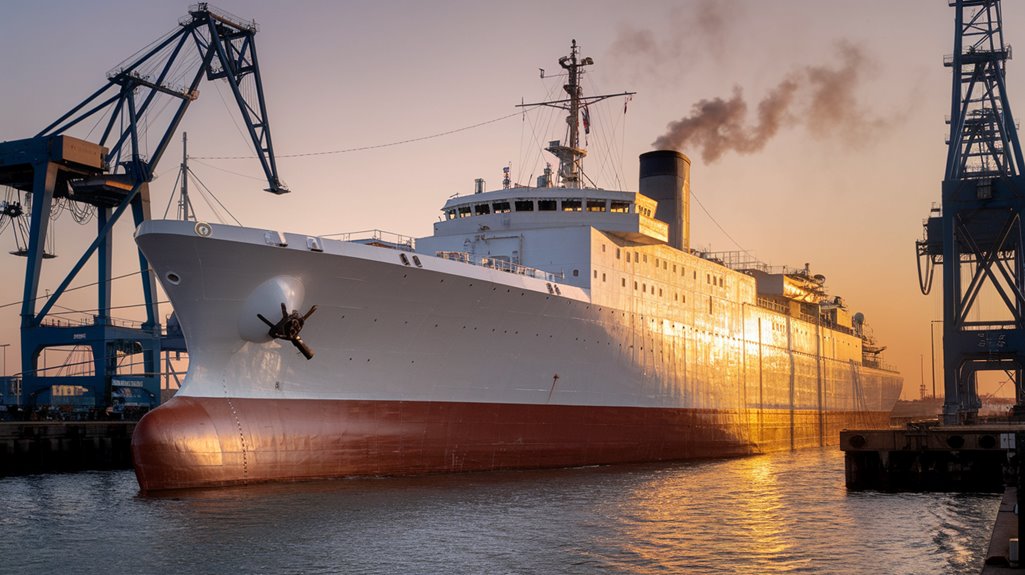
Modern advances in nuclear technology have sparked renewed interest in maritime nuclear propulsion, particularly as shipping companies face mounting pressure to reduce carbon emissions.
You'll find that today's nuclear-powered vessels offer significant advantages over their historical predecessors, with enhanced nuclear safety features and minimal environmental impact. Fuel efficiency enables vessels to operate continuously for extended periods, requiring refueling only once a month. The US Navy's remarkable 6200 reactor-years of operational experience demonstrates the technology's reliability and safety potential for commercial applications.
Here's what's driving this maritime renaissance:
- Next-generation reactors from companies like TerraPower operate at lower pressures, reducing accident risks.
- Zero-emission operations align perfectly with IMO's carbon neutrality goals.
- Ships can operate for years without refueling, ideal for long-distance routes.
- Energy-dense nuclear fuel provides better cargo capacity and operational efficiency.
While regulatory challenges remain, modern nuclear propulsion could transform commercial shipping.
With over 160 nuclear-powered vessels already in service, primarily in military applications, the technology's proven track record suggests a promising future in global maritime trade.

